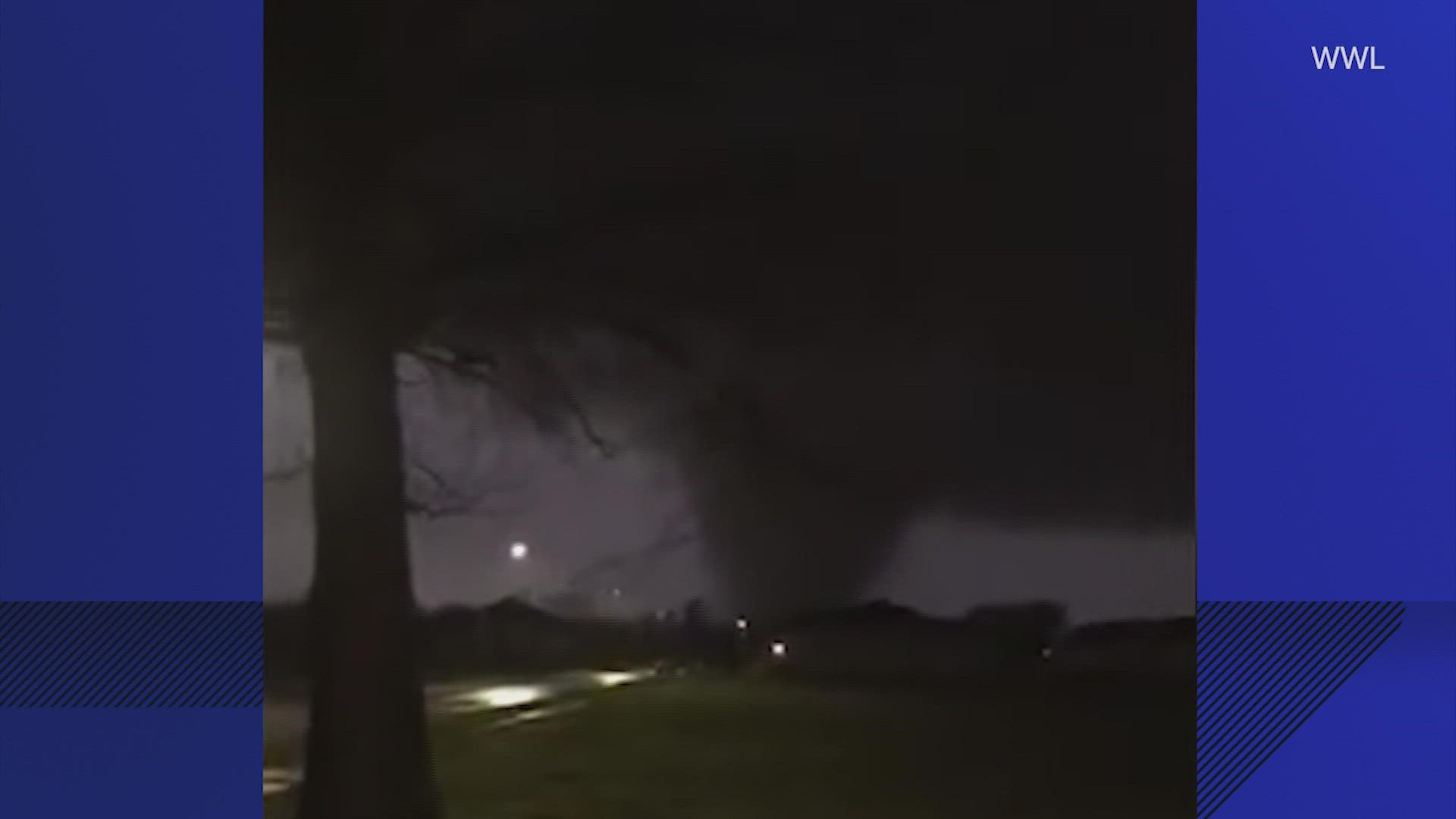NEW ORLEANS — At least one person has died after a tornado touched down in the New Orleans area Tuesday as part of a line of severe weather that started in Texas and Oklahoma and moved east into the Deep South.
The National Weather Service shared a video of the tornado in the eastern part of the New Orleans area that was visible in the darkened sky.
The tornado appeared to start in a New Orleans suburb and then move east across the Mississippi River into the Lower Ninth Ward of New Orleans and parts of the St. Bernard Parish communities of Arabi and Chalmette before moving northeast.
Officials reported the large tornado flipped buses and cars, destroyed homes and killed at least one person in an area that got hammered by Hurricane Katrina 17 years ago. Authorities say the person who died was in Arabi.
While the metropolitan region is often struck by severe weather and heavy rains, it’s rare that a tornado moves through the city.
RELATED: Injuries reported after tornadoes sweep across Texas causing widespread damage | Photos and videos
The large vortex in southeast Louisiana was caught on camera by television stations, law enforcement, and the public as it tore a path through parts of the region that hadn't experienced this kind of disaster since Hurricane Katrina in 2005.
Warnings were issued in the region Tuesday night just after sundown for the New Orleans area as the tornado formed and moved to the northeast toward Mississippi, where storms continued to pose major problems.
Additional injuries or fatalities haven't been reported, but search and rescue operations were underway soon after the storm passed.
New Orleans TV stations aired videos Tuesday night of the tornado moving from the Algiers section of New Orleans across the Mississippi River through the Lower Ninth Ward and Arabi sections of eastern New Orleans.
The severe weather that impacted greater New Orleans was part of the same system that moved through Texas on Monday, killing at least one person north of Dallas along the Oklahoma border, and injuring dozens, including 10 in the city of Crockett.
High winds uprooted trees in Ridgeland, Mississippi, as a possible tornado passed the Jackson-area city Tuesday afternoon, but there were no immediate reports of any injuries or serious damage to buildings. Campus police at Mississippi State University, in Starkville, shared a photo of a large hardwood tree lying across a street.
Forecasters issued multiple tornado warnings for the state, and alerts spread into Alabama as the line of storms moved eastward. More than 90,000 homes and businesses were left without power from Texas to Mississippi.
Many schools were closing early or canceling after-school activities Tuesday in parts of Louisiana and Mississippi to allow students to get home before the weather deteriorated. Shelters opened for residents who need a place to stay while the storms traveled through.
High water posed a threat to motorists early Tuesday in Louisiana on several roads, including a stretch of Interstate 20 and several state highways after rains overnight, authorities said. Deputies in Caddo Parish, which includes Shreveport, rescued three drivers from high waters during the night, the sheriff’s office tweeted before dawn.
The storms were expected to intensify throughout the day as temperatures rise, increasing the threat of tornadoes, hail and strong winds. Forecasters predicted intense tornadoes and damaging winds, some hurricane-force with speeds of 75 mph or greater, in much of Mississippi, southern and eastern Louisiana, and western Alabama. Baton Rouge, Louisiana, and Jackson, Mississippi, were among the cities at risk for bad weather.
The system dumped heavy rain, downed trees and prompted multiple tornado warnings as it moved into Alabama Tuesday evening. The roofs of several homes were damaged in Toxey, Alabama, after a storm preceded by tornado warnings passed through the area, the National Weather Service tweeted.
Louisiana’s federal and state authorities reminded thousands of hurricane survivors living in government-provided mobile homes and recreational vehicle trailers to have an evacuation plan because the structures might not withstand the expected weather. More than 8,000 households live in such temporary quarters, officials said.

